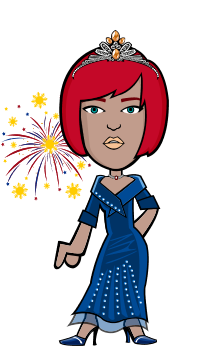A museum is a place where nothing was lost, just rediscovered"--Nanette L. Avery
We got a lot of museum here in Ilocos Sur. In Vigan City alone, there are around 4 to 5. But, I never have gone to even one, so I have decided to go and check what to see inside.
My first museum visit, Vigan National Museum, the house of martyr-priest Father Jose Burgos.
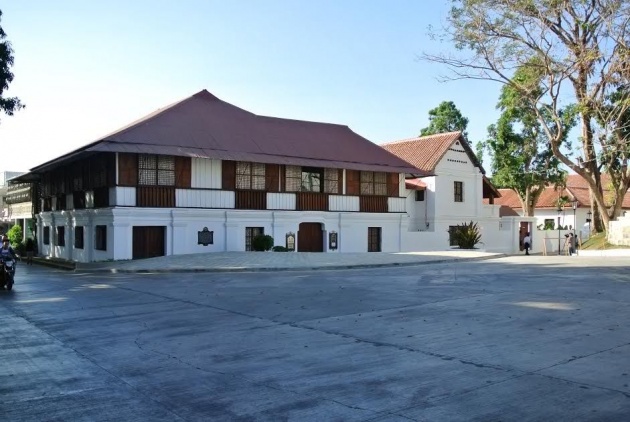
The Vigan National Museum
*Image is credited to lifestyleinquirer.net
The house was built in the 1788. It is a two-storey structure, where the ground floor is made out of red cal bricks and of lime mortar, while the upper storey which its floor is made out of Philippine hardwood that came from the province of Abra. The facade of the house is divided equally by five pillasters, its door and window openings of the house are a combination of flat and segmental arches.
What to see in the ground floor?
Aside from the wooden coffin and that antique equipment we can not figure out, the ground floor exhibits the different products that are made out of Abel Iloco, the loom weaving of Northern Philippines, like the "ules" or blankets, wall decor, table runners and dresses. Materials that are used are being displayed too and that wooden frame loom, locally known as "pagablan" or "tilar" are put into exhibit too.
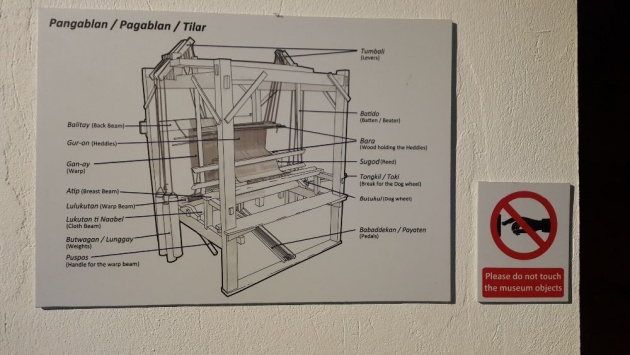
A wooden frame loom and its parts
*Image is credited to Rain Tajon via www.bitLanders.com
You can watch the interviews of the weavers and the process of how to make those Abel Iloco. That I had even got curious, and amazed how do the those patterns. I would really wanted to watch the whole film.
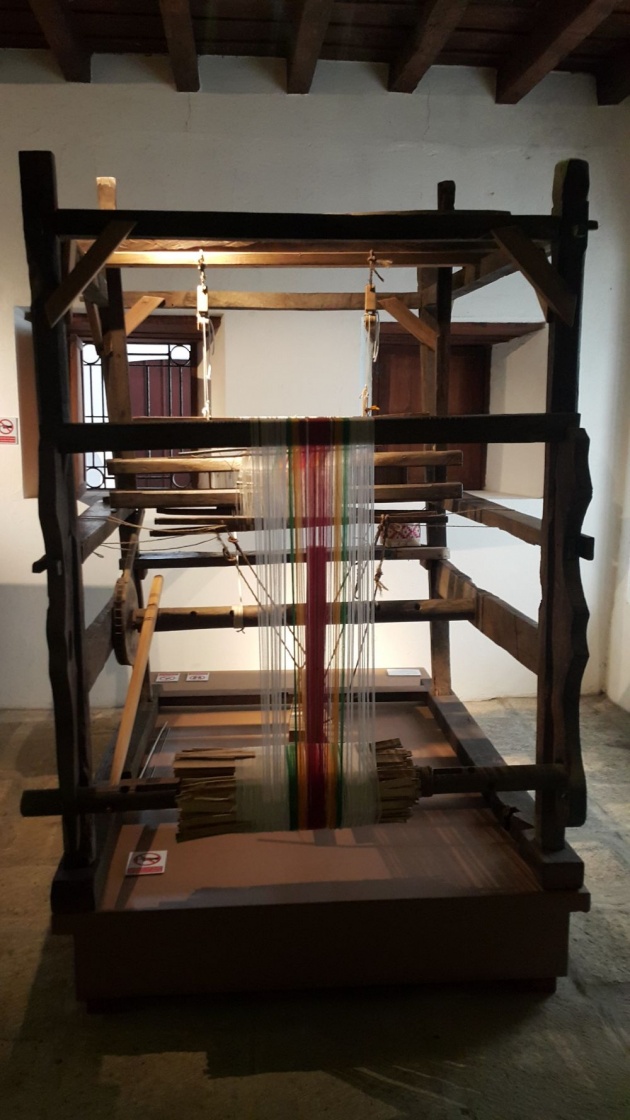
This is the wooden frame loom.
*Image is credited to Rain Tajon via www.bitLanders.com
Trivia: Weaving is an ancient craft amont the Ilocano and a great source of income for the family. And there is a recipient of GAMABA or Gawad ng Manlilika ng Bayan Award is an "abel" weaver named Magdalena Gamayo, who started weaving at the age of 16.
Video is credited to www.youtube.com via Almira Falcon
The upper storey.
This part of the house exhibits the memorabilia of the house's owners. From antique furnitures like bed, cabinet, vanity mirrors, "Butaka" (like a rocking chair but it is not rocking) and that very special chair that we do't know its name.
You can also see the grand piano the family owns, the harp and that old record player. On the cabinet, you can see collections of fans and a very old "Noli Me Tangere" book by Dr. Jose Rizal.
On its ceiling, you can see old lamps hanging, and chandelier too. Down to it floor is the hardwood. And when we were roaming around, we saw this old phone hanging on one of the posts.
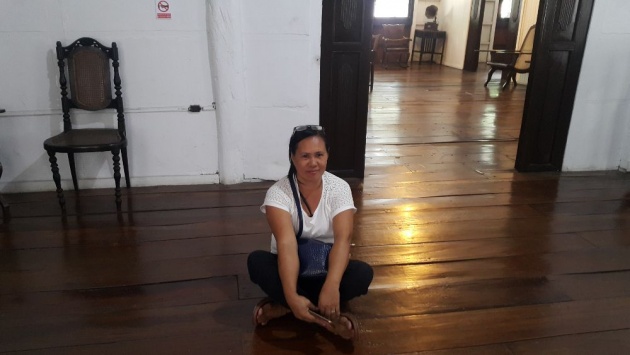
My friend sitting down on the floor.
*Image is credited to Rain Tajon via www.bitLanders.com
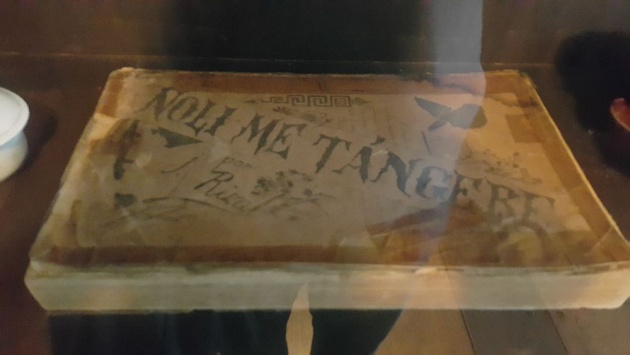
Noli Me Tangere Book
*Image is credited to Rain Tajon via www.bitLanders.com
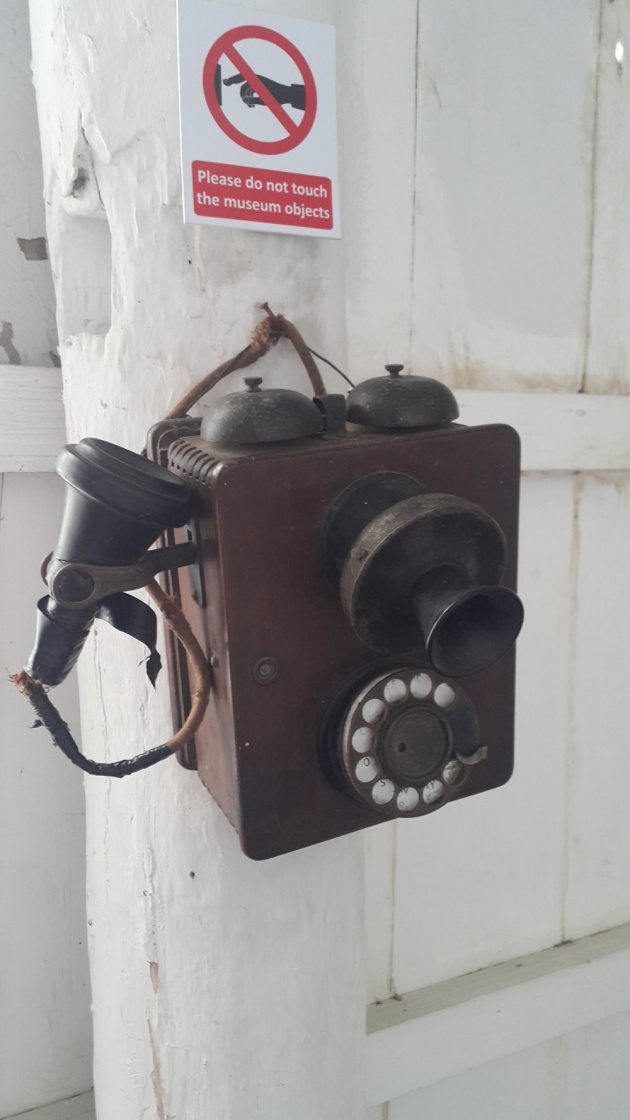
The old telephone
*Image is credited to Rain Tajon via www.BitLanders.com
The old Ilocos Sur Provincial Jail
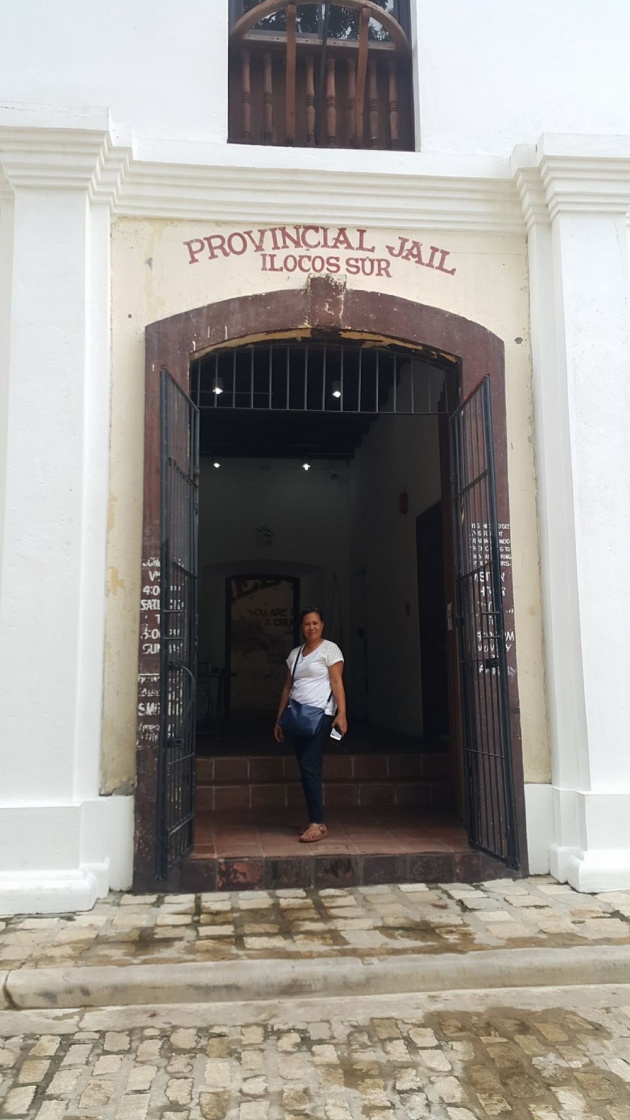
The old provincial jail.
*Image is credited to Rain Tajon via www.bitlanders.com
When the Province of Ilocos Sur was separated from the Province of Ilocos Norte, the provicial was built, and that was in 1818 and was repaired in the year 1855.
In 1898, the building was seized by the revolutionist under Colonel Juan Villamor, but in the year 1899, it was taken over by the American forces, who detained in it the political leaders from the province like Mena Crisologo, Estanislao Reyes and Enrique Quema.
When the prisoners were moved to another place in the year 2014, the old jail was converted into a museum. The Museum had become the cradle of The late President Elpidio Quirino, for he was born on the jail by his mother, Gregoria Rivera, for his father, Mariano Quirino was a warden that time.
On the upper floor you can see what the former president had worn, from his "barong", to his shoes, hats and canes that we locally call it "sarrukod".
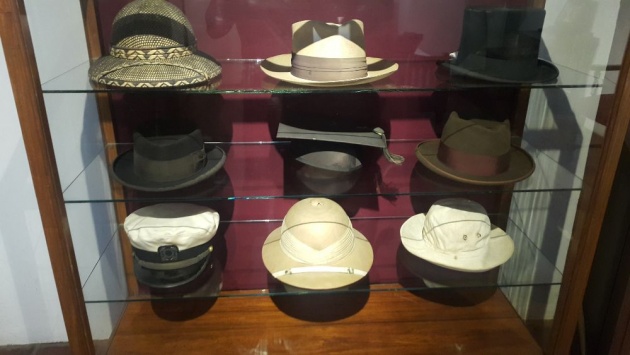
President Elpidio Quirino's hats.
*Image is credited to Rain Tajon via www.bitlanders.com
Roaming around, we able to see another product of the province, the sugar cane wine, locally called BASI.
This part of the museum displays the old sugar cane squzeer that we call "Dadapilan", different "burnay" or eathern jars where the Basi is being fermented, old bottles where the wine is being put and ingredients that is used in making Basi. And I learned a lot about those ingredients.
Personally, I have seen how the sugar cane was being squeezed and the juices were cooked until it become a mollases or that of muscovado sugar. And i was young then, and even saw how the carabao would go into circles with that wooden handle, just to have the juices be squeed.
Video is credited to www.youtube.com via apiong2007
Trivia: The basi can become vinegar if it had been fermented for long.
Another part of the museum, I have learned about the BASI REVOLT through the 14 series of paintings(oil canvass) by Esteban Pichay Villanueva. As I look each paintings, I have seem how people were punished that time. They are being executed in front of the Cathedral, where a lot of people can see.
The Revolt was Called Basi Revolt since the Spanish Colonial Government expropriated the manufacture and sale of the wine basi.
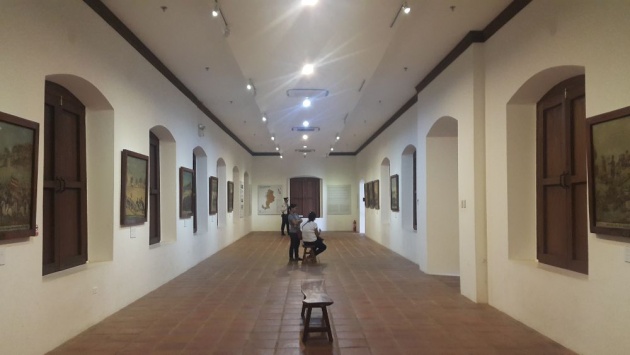
The gallery where the paintings are exhibited.
*Image is credited to Rain Tajon via www.bitlanders.com
Then the last gallery that we checked into are pictures of different Filipinas, who made a name in different genre. From the famous local actress, Gloria Romero to the political icon, the former President Corazon Aquino.
Those photograps was by Isa Lorenzo and curated by Deanna Ongpin Recto.
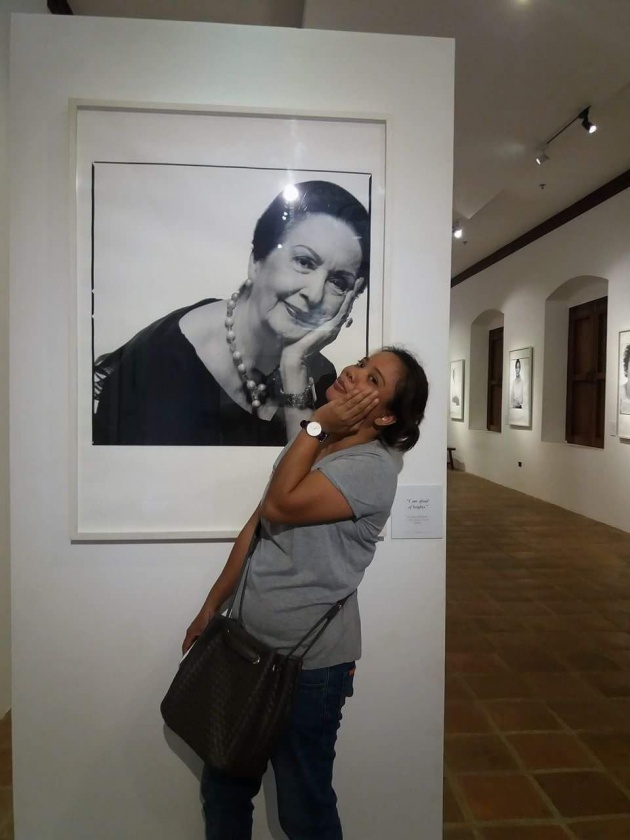
Me and one of the diplayed photos.
*Image is credited to Rain Tajon via www.bitlanders.com
Summary of my first museum visit.
Since I was the one who really wanted to check the museum, I have to be the "spoke person". And my first question before we get in was, "Do we have to pay for entrance fee?"
With the guards smiling at me, he said it is free, we can check the museum for free! And all I have to do is write down my name and follow rules:
- We can take photos, just no flash.
- You can not touch the artifact, as it is beeing reminded in every items.
- If there is this "Thank you for not sitting" words on those old chair, don't sit.
There is more than just looking at the artifacts. I learned more beyond the books were written. Seeing everything with my own two eyes is just overwhelming, that I told myself, I should do this more often. I don't want to feel like I am "foreigner" on my own province. And it made me go back years ago.
I learned about the government's love to preserved everything, that would remind what is life backthen , the heritage, the culture. Displaying such artifacts is the government's effort is also to encourage the young one to have some interest in weaving.
And I have planned in going to another one within this month and I am looking forward for it. I had fun on my first museum visit. So bear with me if you will be reading more from me.
By the way, I am thankful to the guards, somehow they had been very nice in entertaining every questons that I have on mind.

